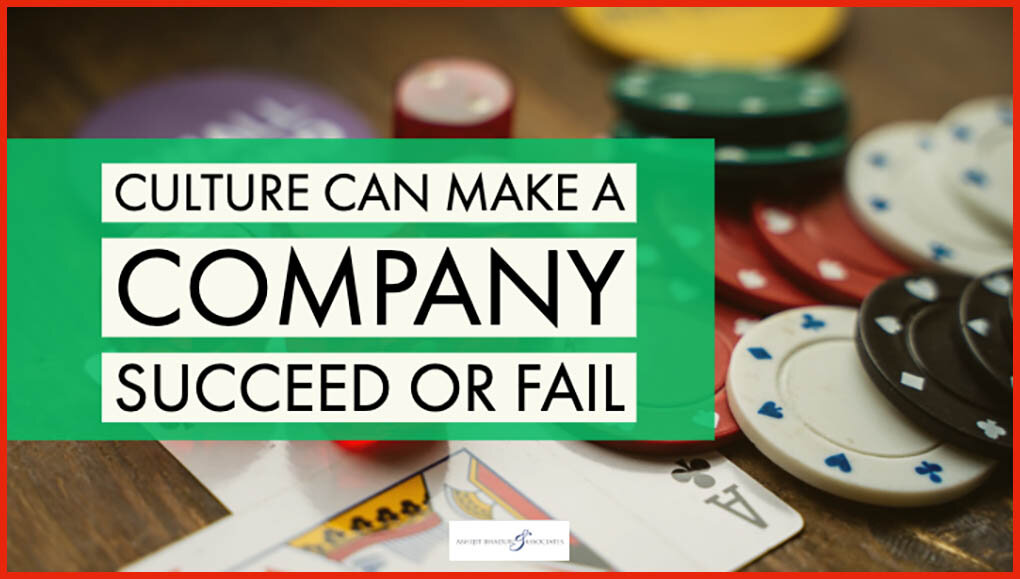There is this much publicized story about the online retailer Zappos. When they hire new employees, they are put through an intensive four-week training program to immerse them in the company’s culture, strategy, and processes. A week later the new hires are given the option to quit if they were uncomfortable with what they experienced the culture to be like. The firm offers them money to quit. They don’t just sell shoes and clothes; they sell their company’s culture just as aggressively. They offer tours of their workplace and send their employees to talk about the Zappos culture to other organizations.They believe that finding qualified employees is only half the battle won.
The real differentiator is finding people who fit the culture of the organization.
Having worked in different organizations I have always believed that even if job descriptions remain similar, what makes people succeed or fail in organizations is their fit with the culture. Cultures are the values in action.Signs of the firm’s culture are everywhere. It is in the visible symbols like the dress code, office décor, the cafeteria choices, the travel policies etc. More importantly it is in the way people interact with each other. Newcomers are expected to follow the norms and fit in. To understand the culture of an organization, examine the integration rituals, workplace behaviors and norms around recognition.
Integration Rituals
How is a new member integrated into the team? Does someone from HR take the person around and get introduced? Is it a colleague? Is it person’s manager who takes charge of integrating the new joinee? Are most conversations about the task? Do colleagues meet after office to get to know the person? In one company, the colleagues take turns to invite the new member of the team home for a meal to make them feel welcome. Are colleagues expected to socialize after work? What do colleagues discuss beyond work?
Workplace Behavior
To what extent is the workplace personalized by the employee? More personalized workplaces are reflective of people who feel mentally settled in that culture. Some offices create uniform looking cubicles and cabins. Some offices create name plates for employees that are put up in their workspaces. A well know tech-company gets people to changes their seating space every day. Are seniors expected to sit in cabins or are they sitting in an open office plan? Do people walk up to each other spontaneously and ask for help? In meetings do a few people speak more than others? In case of differences of opinion, how are they resolved in meetings? Are people punctual?
Recognition Norms
It is human to be appreciated and the norms at the workplace therefore play a huge role in motivating or demotivating the individuals. People have very different expectations of how their colleagues must express appreciation. How often should they do it and in what manner? Some organizations hold quarterly celebrations of achievement while others restrict it to an annual event. Even long service awards reflect an organization’s culture. What is the first landmark that is celebrated – is it at a few months or a few years?Each such question is an opportunity to craft the culture of the organization.
The culture of an organization is the real differentiator between two companies that make similar products or services. A strong culture also serves as the immunity system of the organization. The same culture that makes a company successful may be the reason why the company fails to respond to a new trend in the market. Culture does not live in the posters of the organization, it lives in the stories colleagues tell each other.The culture will develop as a by-product of the people who make up the organization.
If you want to change the culture, start by changing the people you hire, especially at the leadership level. Do not just choose people because they are qualified to do the job. How the person behaves with others will shape your company’s culture. Make sure it is a conscious choice that is made. Every employee is a brand ambassador of the organization. Firms rarely succeed or fail because they have wrong products and services. Success is never about the strategy adopted by the firm. It is usually their culture that makes them succeed or fail.
Join me on Twitter @AbhijitBhaduri
First written for TimesJobs.com July 2014



Leave a Reply to alwyn Cancel reply